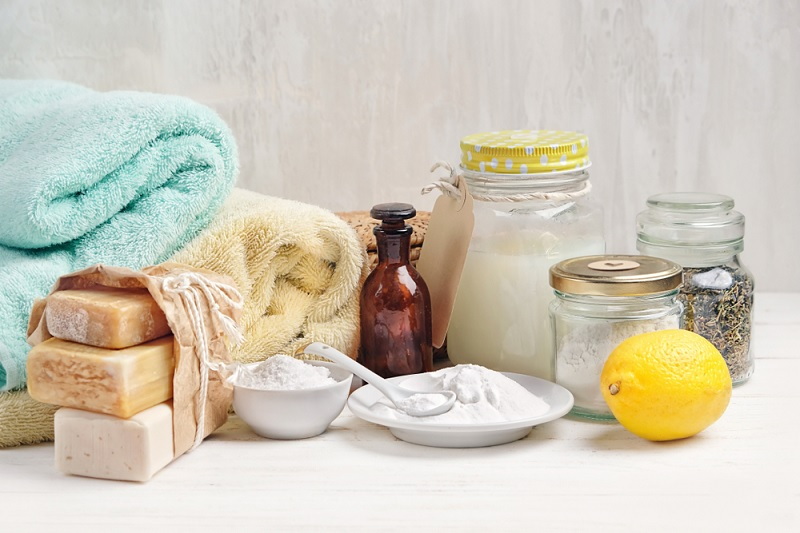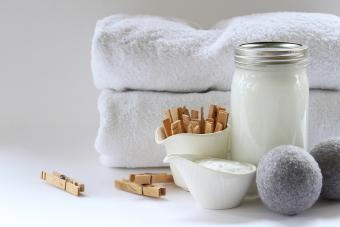Dongguan UFine Daily Chemical Co.,Ltd.
- All
- Product Name
- Product Keyword
- Product Model
- Product Summary
- Product Description
- Multi Field Search
Views: 222 Author: Tomorrow Publish Time: 10-19-2025 Origin: Site











Content Menu
● Understanding Laundry Soap and Pods
>> Benefits of Making Your Own Laundry Soap and Pods
● Ingredients Needed for Homemade Laundry Soap
● How to Make Powder Laundry Soap
>> Instructions
>> Usage
● How to Make Liquid Laundry Soap
>> Instructions
>> Usage
>> Materials
>> Instructions
>> Safety Tips
● Choosing the Right Ingredients for Your Needs
● Homemade Detergent and Fabric Care
● Environmental and Health Considerations
● FAQs
>> 1. How long does homemade laundry soap last?
>> 2. Can I use homemade laundry soap for all types of washing machines?
>> 3. Are laundry pods safe for children?
>> 4. Can I add fragrance to homemade laundry soap?
>> 5. Is homemade laundry soap environmentally friendly?
Laundry soap and pods are popular alternatives to commercial detergents, offering control over ingredients, cost savings, and environmental benefits. By making your own, you can tailor the formula to your preferences and needs. This article guides you through the process of making laundry soap and laundry pods at home, explaining the necessary ingredients, equipment, and step-by-step instructions.

Laundry soap is a cleaning agent designed to remove dirt, stains, and odors from fabrics. It usually consists of surfactants, builders, enzymes, and sometimes fragrance additives. Laundry pods are pre-measured capsules containing detergent, making laundry more convenient and reducing waste.
- Cost-effective: Lower costs compared to commercial products.
- Customization: Select ingredients according to skin sensitivity or fragrance preferences.
- Eco-friendly: Control over chemicals reduces environmental impact.
- Reduced packaging waste: Less plastic usage with homemade options.
The ingredients vary depending on whether you want to make liquid soap, powder soap, or pods.
- Washing soda (sodium carbonate): Builds cleaning power by softening water.
- Borax (sodium borate): Enhances cleaning and disinfecting.
- Soap bar (preferably natural, such as castile soap): Provides the cleaning surfactant.
- Essential oils (optional): For fragrance.
- Water: For mixing, especially if making liquid soap.
- Citric acid (optional): Helps with water softening and stain removal.
For pods, a liquid or gel detergent base is necessary along with a pod material (usually water-soluble film).
- Large mixing container
- Grater or food processor
- Measuring cups
- Airtight storage container
1. Grate the soap bar: Use a grater or food processor to shred the soap finely.
2. Mix ingredients: In a large mixing container, combine 1 cup grated soap, 1 cup washing soda, and 1 cup borax.
3. Add optional fragrance: Mix in 15-20 drops of essential oil if desired to add a pleasant scent.
4. Store: Transfer the mixture to an airtight container to preserve freshness.
Use 2 tablespoons per normal load of laundry. For heavily soiled clothes, increase the amount slightly.
- Large pot or slow cooker
- Stirring utensil
- Measuring tools
- Storage containers (buckets or bottles)
1. Grate soap: Finely grate 1 bar (about 4-5 ounces) of soap.
2. Heat water: Bring 4 cups of water to a gentle boil.
3. Dissolve soap: Slowly add grated soap into hot water, stirring until fully dissolved.
4. Add washing soda and borax: Stir in 1 cup washing soda and 1 cup borax until completely dissolved.
5. Add cold water: Pour 1 gallon of cold water into the mixture and stir well.
6. Cool and store: Let the mixture cool and thicken. Stir to break up any clumps before pouring into storage containers.
Use ½ to 1 cup per load depending on the size and soil level. Shake container before use as separation may occur over time.

Making laundry pods is slightly more advanced and requires specific materials and safety precautions.
- Liquid or gel laundry detergent (homemade or store-bought)
- Water-soluble pod film (polyvinyl alcohol - PVA film)
- Measuring spoon or syringe
- Gloves (to protect skin)
- Sealed workspace for safety
1. Prepare detergent: Use a well-mixed liquid detergent or homemade liquid soap.
2. Fill pods: Carefully fill the pod film pouches with measured amounts of detergent using a syringe or spoon.
3. Seal pods: Seal the pods by folding or using heat according to the manufacturer's instructions on the film packaging.
4. Store pods: Keep the pods in a dry, locked container away from children and pets.
- Laundry pods are highly concentrated and can be hazardous if ingested or if they come into contact with skin or eyes.
- Always wear gloves during production.
- Label pods clearly and store them securely out of reach of children and pets.
- Avoid moisture exposure to pods before use, as it can dissolve the film prematurely.
Different soaps and detergents have varied effects based on skin type, water hardness, and cleaning requirements. For sensitive skin, avoid synthetic fragrances and use gentle, natural soap bars like pure castile soap. If your water is hard (contains high minerals), the addition of washing soda and borax will improve cleaning performance.
Using essential oils such as lavender or tea tree can add pleasant scents and some antibacterial properties, but use sparingly to avoid irritation.
Homemade laundry soap is generally gentle on fabrics, making it suitable for most types of clothes. However, avoid using homemade soap pods with delicate fabrics unless you test carefully. Liquid homemade detergent can sometimes leave residues on clothes, so adding an extra rinse cycle might be necessary to ensure detergent removal.
For stain treatment, apply a small amount of undiluted liquid soap directly to the stain before washing. Regular use of these homemade detergents helps maintain fabric softness because they typically lack harsh chemicals and fillers found in commercial detergents.
Homemade detergents reduce chemical pollutants in wastewater, as they often contain biodegradable, non-toxic ingredients. They also contribute to lowering plastic waste by reducing packaged detergent consumption.
If you suspect allergies or skin sensitivities, test the detergent on a small patch of skin or clothing before using regularly.
- Powdered laundry soap should be stored in an airtight container to prevent moisture absorption.
- Liquid detergents can separate or thicken over time. Shake well before each use.
- Laundry pods must be kept dry and secure to maintain their integrity.
Making your own laundry soap or pods is a practical, customizable, and eco-friendly way to achieve clean clothes without relying on commercial detergents. With simple ingredients and basic tools, you can prepare powder, liquid, or pod detergents tailored to your preferences and budget. Always observe safety precautions, especially when making pods, to ensure responsible and safe usage. Homemade laundry detergents save money and reduce environmental impact while giving you control over what goes into your cleaning products.

Homemade laundry soap can last up to six months if stored properly in a cool, dry place. Liquid detergents may separate over time and require stirring before use.
Yes, but for high-efficiency (HE) machines, it's important to use low-sudsing formulas, primarily liquid or specially formulated powders.
Laundry pods can be hazardous if ingested or touched. Always store them locked away from children and pets.
Yes, adding essential oils is a common way to add fragrance, but test for skin sensitivity first.
Generally, yes. Homemade soaps use fewer synthetic chemicals and packaging, reducing environmental impact.